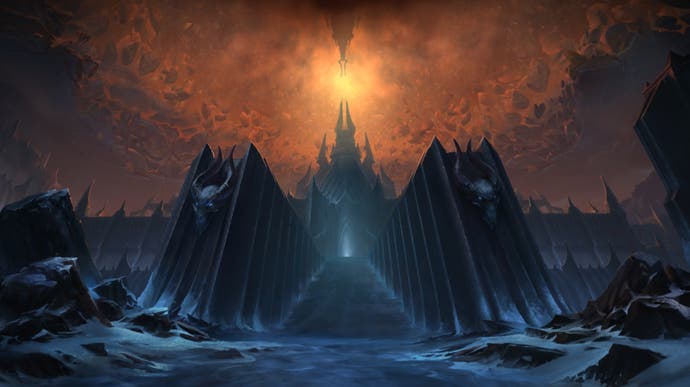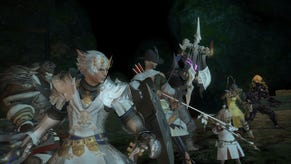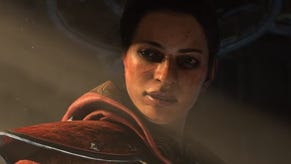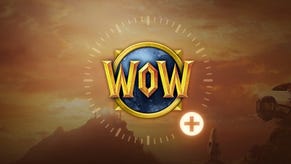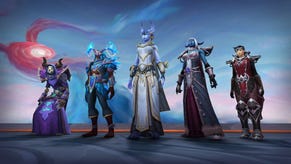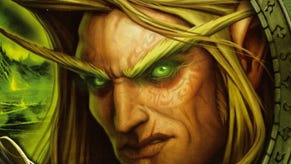World of Warcraft: Shadowlands review - don't call it a comeback
Hereafter effects.
It wouldn't be right to suggest that World of Warcraft had ever, at any point during the last 16 years, been a less than popular and successful game. The days when it was thought the biggest game in the world are long behind it, but it has been reliably raking in subscription revenue and expansion pack sales on a considerable scale the whole time. It's also a fool's errand to mark any one expansion out as a return to form; many WOW players will argue that each expansion is either a disgraceful betrayal or a triumphant comeback, but different sections of the community seldom agree on which is which. (Meanwhile, long-term but less invested casual players like myself tend to think they're all pretty good.)
Yet something feels different this time. Shadowlands, WOW's eighth expansion - or perhaps we should more properly call it the ninth edition of the game - was briefly the fastest-selling PC game of all time this month, before Cyberpunk 2077 came out. Activision Blizzard CEO Bobby Kotick has been talking up this venerable franchise too, boasting of record player engagement before the expansion released and noting that it brings in over a billion dollars a year, making it the financial equal of stablemate Call of Duty.
What's going on? The pandemic, certainly. Few are the popular games that haven't seen more interest and more playtime this year, with everyone spending more time at home, searching for comfort and entertainment. Kotick also seemed to suggest last year's launch of the retro WOW Classic was a turning point. The developers say that there isn't much crossover in the communities of the classic and modern games, but it's easy to imagine that Classic boosted mindshare and tempted many lapsed players back to the wider fold. (And since the games share a single subscription fee, they're commercially indistinguishable.)
You have to look at the game itself too, though, and Shadowlands represents something of a soft reboot for World of Warcraft. Narratively, it's a relatively easy jumping on point. Although the catalyst for players' journey into the Shadowlands - the Warcraft universe's version of the afterlife - lies somewhere in the convoluted lore-nerdery and soap-opera of 2018's Battle for Azeroth, once you are "beyond the veil", you will be mostly interacting with an all-new cast of characters and factions (with the added fan-service of a few deceased favourites getting a new lease of death).
But it's not really in the expansion's laundry list of new features that you will find a decisive new direction for World of Warcraft. 2016's brilliant Legion can make a better case for redefining the modern game; it introduced follower adventures that play out while you're offline, a viable solo endgame in World Quests, and in Artifact Power, an endgame resource/progression framework quite distinct from the regular gear grind - all ideas which both Battle for Azeroth and Shadowlands have presented variations on.
No, the profound change actually came in the Shadowlands pre-patch, and is free for all WOW players to enjoy, whether they buy the expansion or not. It's the levelling revamp, and I've written about it before. It squashes 120 character levels down to 50 (raised to 60 by Shadowlands) and not so much reorganises the flow of the game as completely flattens it, pushing new players straight into Battle for Azeroth after an opening tutorial, or letting them hop to their expansion of choice, all scaled to their level. This is a less showily gargantuan overhaul than the complete quest rewrite that accompanied 2010's Cataclysm, but it might be an even more significant one. It shortens the distance to the Shadowlands for a new player, as intended. It also wisely rewards and encourages a playstyle that many enjoy (myself included), but one that the game previously seemed to fight - that of the serial alt-starter, the person who would rather try a new class and start again than spend too long at endgame.
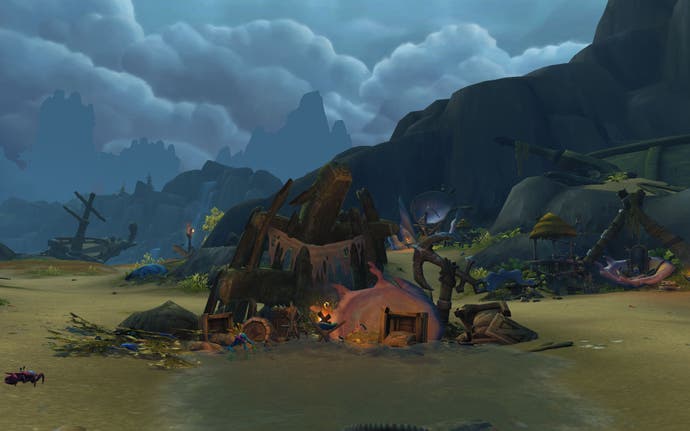
More than this, it simply makes the game as a whole tighter, fitter, lighter on its feet, more cogent. It's funny how much the numbers matter. They shouldn't. If it's possible to mathematically squish a decade and a half of hard-fought progress - of accumulated stamina, armour and damage-per-second - by around 60 per cent just like that, surely the numbers never meant anything in the first place? But of course they did, because humans just love investing things with meaning. And so hitting level 60 for the second time feels more momentous than hitting level 120 did, because it reminds you of the first time you hit that landmark, 15 years ago. It feels, paradoxically, like a fresh summit. It feels like a rebirth.
Getting from 50 to 60 is swiftly accomplished in the Shadowlands. WOW has completed a shift from being organised geographically - as a meandering series of hops from quest hub to quest hub - to a narrative structure that will be familiar from any modern RPG or open-world game. There's a "critical path" story campaign that will occupy most of your time as you level, plus largely optional side quests to delay you if you choose. Shadowlands' storytelling is focused and closely linked to its star feature: Covenants. These are four factions, one of which you will choose to join when you hit the level cap. They are the Kyrian (angels), Necrolords (necromancers), Night Fae (fairies) and Venthyr (vampires), each tending to their corner of the afterlife and, not always tenderly, to the souls in their care. Their four kingdoms are suspended above a true hellscape called The Maw - a place so awful you cannot ride your mount there. The Maw is ruled by a giant sadistic beefcake called The Jailer, who is in league with the disgraced Horde Warchief, Sylvanas Windrunner, and who is siphoning the souls of all the dead to bolster his armies for an invasion of all reality, or something.
The Covenants and the mystical offworld setting allow WOW's artists and writers to indulge even more fully their taste for exaggerated archetypes and flavourful, unapologetic cliché. As you ride a flying space worm from the enchanted fairy forest to the crumbling Gothic spires of vampire town, you'll feel more than ever like you're visiting an anything-goes pop-fantasy theme park. This is also WOW's most prog-rock expansion since The Burning Crusade, conceptually turned up to 11, throwing up huge, outlandish vistas that look like airbrush art from Yes, Megadeth and Meat Loaf album covers. It's tremendously entertaining and often achieves a saturated, opulent gorgeousness - although my personal preference is for exploring the jungles, deserts, mountain ranges and ruined temples of old Azeroth, like some sort of fantasy Indiana Jones.
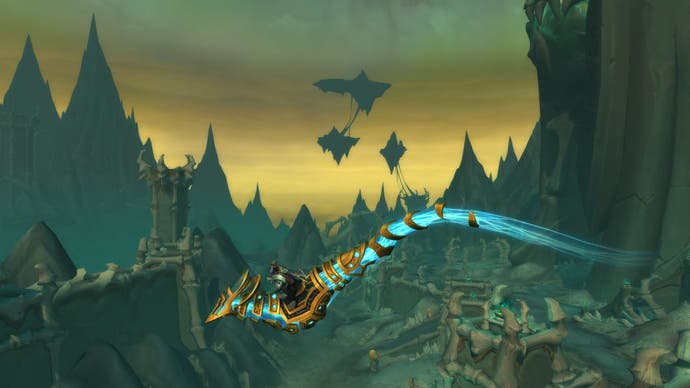
Once you reach the level cap and choose your Covenant, the game starts afresh with a Covenant quest campaign and many new features to unlock - a good deal of them specific to your chosen team. You get Covenant-flavoured class and mobility skills, a Covenant base to hang out in, Covenant followers to send on missions, a Covenant fast-travel network and a choice of three characters to form Soulbinds with (which unlock new talent trees), plus, of course, some fancy cosmetic rewards. I chose Venthyr, so I get such practical armour options as a gravestone on my back and little red wax candles on my shoulders. You also get a special gameplay feature, which in the Venthyr's case is a party you can hold once a week to win new characters over to your cause; you go on quests to arrange the provisions and entertainment and try to steer events towards your guests' preferences (formal or casual, serene or violent). It's diverting, absurd, a bit funny and almost sad, as these faded aristocratic lords of the afterlife strut around a shabby ruined castle judging lost souls for entertainment while you run about serving tea. Makes a change from raiding, I guess.
Choosing your Covenant is a big moment. It will colour so much of your time at the endgame and it brings a lot of fun and flavour - although the four factions are so broadly drawn that it also comes across as a bit silly and adolescent, like choosing whether you want to be a goth, jock, theatre kid or prefect. It feels like you're ironically playacting at something World of Warcraft is actually excellent at fostering more organically in its main factions and races - a sense of identification with your tribe.
The Covenant's real purpose, though, is to help glue together at least some of the bewildering array of systems, activities and currencies that make up a modern World of Warcraft endgame. Players complained bitterly about this in Battle for Azeroth, mostly because some core systems were ill-thought-out, but also because Blizzard struggled to make sense of it thematically in a way that felt like a choice rather than an onerous to-do list. The Covenant does help organise this, but don't for a minute think that means the endgame has actually been simplified. Far from it. It is still incredibly complex, accommodating many playstyles (which is great) and offering something like half-a-dozen meaningful paths for progression (which is a bit much): a smothering web of aspirational grind. I wonder, though, if this extreme density and variety of endgame play is partly behind the increased engagement from players the game has seen in recent years. As much as they might feel burdened by it, I suspect it is.
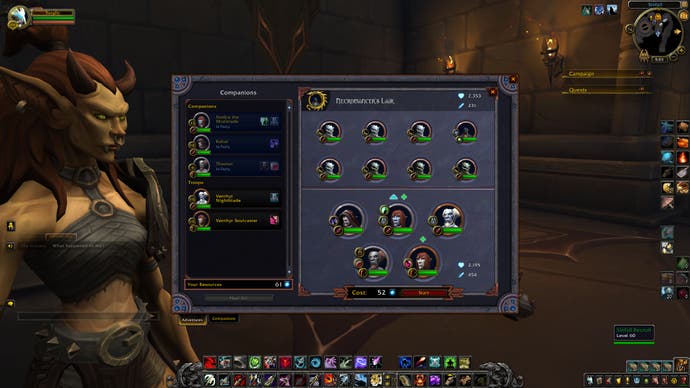
For me, Shadowlands' big win - aside from the levelling revamp - is not one you will find on a feature list. It's the tuning. I don't mean to suggest it is perfectly balanced. To be quite honest, I wouldn't know if it was, though it seems improbable. But in many respects it just seems a more considered, more carefully paced experience than most recent expansions. Perhaps influenced by the success of the uncompromising WOW Classic, the game is even occasionally willing to show its teeth during the previously frictionless questing and solo play. There are more elite monsters out there that can give you trouble, more tightly packed mob groupings that will have you reaching outside your usual skill rotation for tactics, more world bosses to bring players together. The item game has, mercifully, slowed down a bit, as has acquisition of the new central resource, Anima. Crafting is simplified but much better sorted, keeping pace with your levelling rather than falling behind in a mire of materials grind.
There are a couple of exceptions to this rule. The first is the Threads of Fate, a system which allows you to skip the main storyline after finishing it on one character and go straight to the choice of Covenant at level 50 when bringing subsequent characters through the expansion. This is welcome, especially considering how curious many players will be to try the other Covenants out, but the feature was added relatively late in the public testing phase and it shows. It should be WOW's version of Diablo 3's Adventure Mode, but there isn't quite enough to do to sustain the levelling experience smoothly.
The other, more forgivable lapse of tuning is Torghast, Tower of the Damned: a roguelike-style, near-infinite, randomised dungeon located in The Maw. As you ascend the tower, you acquire new special skills and skill modifiers, creating a bizarre, one-off, overpowered class hybrid as you go. It's all temporary, though, and you only have a limited number of deaths before you lose it all. It's also playable either solo or in a group. There is no way to make this freeform experience as mechanically tight as WOW's dungeons and raids - and perhaps that is actually the point. I feel like Torghast is intended to be a holiday, for both designers and players, from caring so obsessively about tuning, balance and party dynamics. And for the most part it makes for a refreshing holiday, albeit a sepulchrally dark and monochromatic one. But there's no escaping the fact that it can feel sloppy and erratic compared to the slick PVE challenges WOW players are used to.

In Torghast and in the Soulslike-inspired Maw, where you drop currency when you die, it's interesting to see Blizzard's designers fold some contemporary (if not exactly bleeding-edge) fads into this venerable game. As thematically wacky as it is, Shadowlands finds World of Warcraft feeling more self-aware than in recent expansions, more approachable, less blinkered. This is probably a contributing factor to the game's current popularity, too.
But let's not get carried away. Let's remember that one secret to WOW's success has always been its ability to modernise while staying true to itself, and never pretending to be anything other than the consummate old-school MMO. You can't have a dramatic reversal of fortune when you've actually had 16 years of consistent and smooth progress. You can't call it a comeback when you've always been the king.
